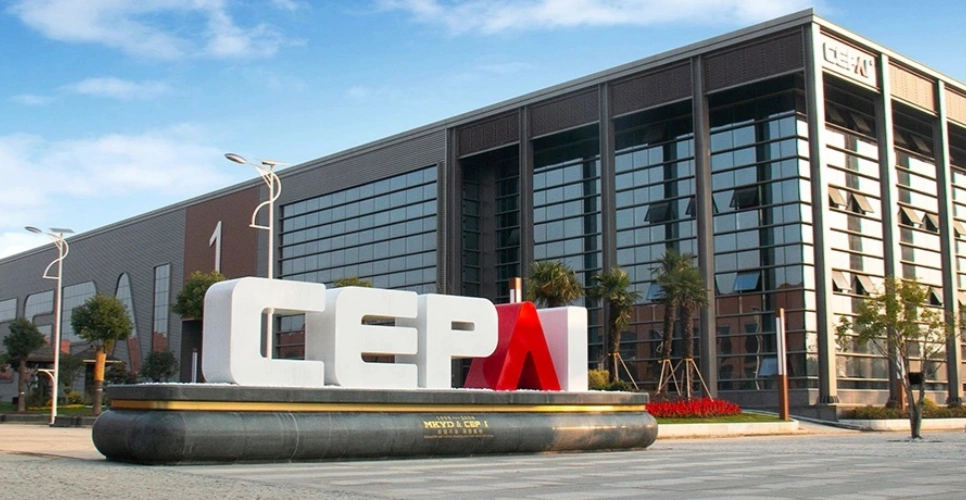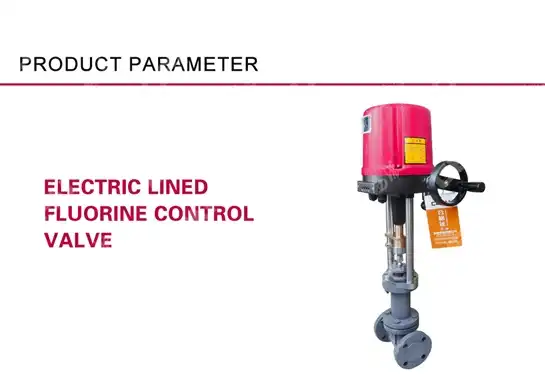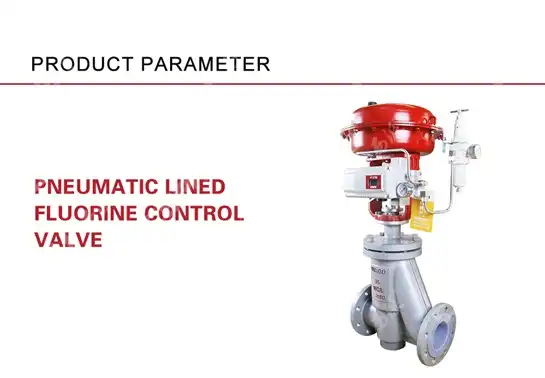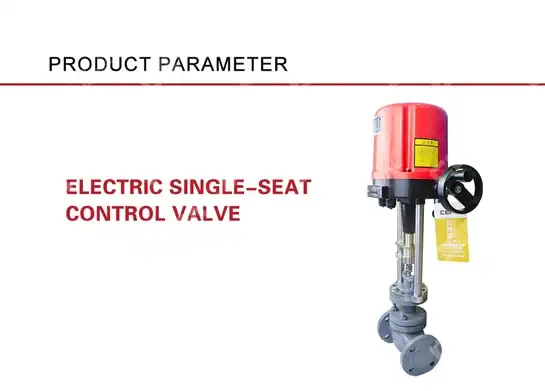Single Seat vs. Sleeve Control Valve: A Head-to-Head Comparison
When your industrial process faces critical flow control challenges with demanding pressure conditions and precise shut-off requirements, choosing between a Single Seat Control Valve and sleeve design becomes a make-or-break decision. This comprehensive comparison will dissect the fundamental differences, performance characteristics, and application suitability of both valve technologies to help you make the optimal choice for your specific operational needs. Understanding these distinctions is crucial for process engineers, plant managers, and procurement specialists who need reliable, efficient flow control solutions that deliver consistent performance while minimizing maintenance costs and operational downtime.
Understanding Single Seat Control Valve Fundamentals
Single Seat Control Valves represent the cornerstone of precision flow control technology, featuring a straightforward yet highly effective design that has proven its reliability across countless industrial applications. The fundamental architecture consists of a single valve plug that seats against one seating surface, creating a direct and unambiguous flow control mechanism. This design simplicity translates into exceptional shut-off capabilities, making Single Seat Control Valves the preferred choice when tight closure is paramount for process safety and efficiency. The operational principle of Single Seat Control Valves centers on the linear movement of the valve plug, which modulates flow by varying the annular area between the plug and seat. This direct relationship between actuator position and flow rate provides excellent controllability and repeatability, essential characteristics for critical process applications. The unbalanced design means that the full system pressure acts on the valve plug, requiring adequate actuator sizing to overcome these forces, but this same characteristic enables the superior sealing performance that defines Single Seat Control Valves.

-
Design Characteristics and Construction Features
The construction of Single Seat Control Valves emphasizes robustness and reliability through carefully engineered components that withstand demanding operating conditions. The valve body typically features a streamlined flow path that minimizes pressure drop while maintaining structural integrity under high-pressure applications. The single plug design eliminates the complexity associated with multiple seating surfaces, reducing potential leak paths and simplifying maintenance procedures. Material selection for Single Seat Control Valves follows strict engineering standards, with valve bodies commonly manufactured from carbon steel, stainless steel, or exotic alloys depending on process requirements. The plug and seat materials are carefully matched to provide optimal sealing characteristics while resisting wear, corrosion, and erosion from process fluids. Advanced manufacturing techniques ensure precise tolerances and surface finishes that contribute to the exceptional shut-off performance these valves are known for.
Exploring Sleeve Control Valve Technology
Sleeve control valves, also known as cage-guided control valves, represent an evolutionary advancement in flow control technology that addresses specific limitations found in traditional single-seat designs. The distinctive feature of sleeve control valves lies in their unique internal geometry, where the valve plug moves within a perforated cylindrical sleeve or cage structure. This design allows for enhanced flow characteristics and improved performance in demanding applications, particularly where noise reduction and cavitation resistance are critical considerations. The perforated sleeve serves multiple functions beyond simple flow guidance, acting as a pressure recovery chamber that reduces the velocity of the fluid as it passes through the valve. This velocity reduction is crucial for minimizing noise generation and preventing cavitation damage, making sleeve control valves ideal for high-pressure drop applications where traditional Single Seat Control Valves might experience operational challenges. The multiple flow paths through the sleeve perforations create a more gradual pressure reduction, distributing the energy dissipation over a larger area.
-
Advanced Flow Control Mechanisms
The sophisticated flow control mechanisms inherent in sleeve control valve designs provide superior performance characteristics compared to conventional single-seat configurations. The cage structure guides the valve plug throughout its stroke, ensuring optimal alignment and preventing lateral movement that could cause premature wear or compromised sealing. This guided design also enables the use of balanced plug configurations, which significantly reduce the actuator force requirements compared to unbalanced Single Seat Control Valves. The perforated sleeve design allows for customized flow characteristics through strategic placement and sizing of the holes or slots in the cage structure. Engineers can optimize the sleeve geometry for specific applications, whether linear, equal percentage, or custom flow characteristics are required. This flexibility in flow characteristic design, combined with the inherent pressure recovery properties of the sleeve architecture, makes these valves particularly suitable for demanding process control applications where precise flow modulation is essential.
Performance Analysis: Single Seat vs. Sleeve Configuration
The performance comparison between Single Seat Control Valves and sleeve configurations reveals distinct advantages and limitations that directly impact their suitability for different applications. Single-seat valves have lower allowable pressure drops compared to valves with balanced trim designs, which limits their application in high-pressure differential scenarios but makes them ideal for situations requiring exceptional shut-off performance. Shut-off performance represents one of the most significant differentiators between these valve types. Single Seat Control Valves excel in tight shut-off applications, typically achieving Class IV or Class V leakage rates according to ANSI/FCI standards. The simple single-seat design eliminates the challenges associated with achieving simultaneous sealing on multiple surfaces, making these valves the preferred choice for critical isolation applications where even minimal leakage is unacceptable. In contrast, sleeve control valves prioritize flow control performance and operational stability over absolute shut-off capability. While modern sleeve valve designs can achieve respectable shut-off performance, they typically cannot match the leak-tight characteristics of well-designed Single Seat Control Valves. However, sleeve valves excel in high-pressure drop applications, offering superior cavitation resistance and noise attenuation that make them indispensable for challenging process conditions.
-
Pressure Drop and Flow Capacity Considerations
The pressure drop characteristics of Single Seat Control Valves and sleeve configurations differ significantly due to their distinct internal geometries. Single Seat Control Valves feature relatively straightforward flow paths with minimal internal restrictions, resulting in lower pressure drops at equivalent flow rates. This characteristic makes them energy-efficient choices for applications where maintaining system pressure is important for overall process efficiency. Sleeve control valves, while typically exhibiting higher pressure drops due to their more complex internal geometry, provide superior handling of high-pressure differential conditions. The pressure recovery effect inherent in sleeve designs allows these valves to handle higher pressure drops without experiencing severe cavitation or noise issues that would plague traditional single-seat designs. This capability makes sleeve valves indispensable for pressure reduction services and other high-pressure drop applications where Single Seat Control Valves would be inadequate.
Application-Specific Selection Criteria

Selecting between Single Seat Control Valves and sleeve configurations requires careful analysis of application-specific requirements, including process conditions, performance expectations, and maintenance considerations. Single-seat globe control valves are widely used in applications where tight shut-off is critical, particularly in safety-critical services where valve leakage could pose environmental or safety risks. The straightforward design and ease of maintenance make Single Seat Control Valves attractive for applications where simplicity and reliability are paramount. Their proven track record in countless industrial installations provides confidence for engineers specifying these valves for critical applications. The ability to achieve exceptional shut-off performance without complex internal mechanisms makes Single Seat Control Valves the logical choice for block-and-control applications where both flow modulation and tight isolation are required. Sleeve control valves find their niche in applications where traditional single-seat designs face operational challenges. High-pressure drop services, severe noise requirements, and cavitating conditions all favor sleeve valve selection. The balanced plug designs commonly used in sleeve valves reduce actuator requirements, making them cost-effective choices for large valve sizes or high-pressure applications where Single Seat Control Valve actuator costs would be prohibitive.
-
Industry-Specific Applications and Considerations
Different industries exhibit preferences for specific valve technologies based on their unique operational requirements and regulatory constraints. The oil and gas industry, for example, relies heavily on Single Seat Control Valves for wellhead and pipeline applications where shut-off integrity is crucial for safety and environmental protection. The proven reliability and simple maintenance of these valves align well with the demanding operational environments typical of upstream oil and gas operations. Power generation facilities often favor sleeve control valves for steam service applications where noise reduction and cavitation resistance are critical. The ability of sleeve valves to handle the high-pressure drops and temperature variations common in power plant steam systems makes them indispensable for these applications. Similarly, chemical processing plants utilize sleeve valves in severe service applications where the superior flow characteristics and cavitation resistance outweigh the more complex maintenance requirements.
Maintenance and Operational Considerations
The maintenance requirements and operational considerations for Single Seat Control Valves and sleeve configurations differ significantly, impacting long-term ownership costs and operational reliability. Single-seat valves' simple structure and ease of maintenance make them attractive options for facilities with limited maintenance resources or where rapid repair turnaround is essential for production continuity. Single Seat Control Valve maintenance typically involves straightforward procedures due to the uncomplicated internal design. Plug and seat replacement can often be accomplished without removing the valve from the pipeline, using portable machining equipment to resurface seats in-situ. The accessibility of wear components and the availability of standard replacement parts contribute to lower maintenance costs and reduced downtime compared to more complex valve designs. Sleeve control valves require more sophisticated maintenance procedures due to their complex internal geometry and multiple precision-machined components. The cage structure must be carefully inspected for wear or damage, and replacement typically requires complete valve disassembly. However, the guided plug design and balanced configuration often result in more predictable wear patterns and longer intervals between major maintenance activities, potentially offsetting the higher complexity of repair procedures.
-
Long-term Reliability and Performance Degradation
The long-term reliability characteristics of Single Seat Control Valves and sleeve configurations reflect their fundamental design differences and typical application environments. Single Seat Control Valves exhibit predictable wear patterns primarily concentrated at the seating surfaces, making condition monitoring and maintenance planning straightforward. The direct metal-to-metal contact between plug and seat provides durable sealing but requires periodic maintenance to maintain optimal performance. Sleeve control valves distribute wear over larger surface areas due to their guided design and multiple flow paths, potentially extending service intervals in appropriate applications. However, the more complex internal geometry can make damage assessment more challenging, requiring specialized inspection techniques to evaluate internal component condition. The balanced plug designs typically used in sleeve valves reduce the mechanical stress on seating surfaces, contributing to extended service life in properly selected applications.
Conclusion
The choice between Single Seat Control Valves and sleeve configurations ultimately depends on specific application requirements, with each technology offering distinct advantages. Single Seat Control Valves excel in tight shut-off applications requiring simplicity and reliability, while sleeve valves provide superior performance in high-pressure drop and noise-sensitive applications.
Cooperate with CEPAI Group Co., LTD.
CEPAI Group Co., LTD. stands as your trusted partner for high-quality control valve solutions, combining decades of expertise in valve manufacturing with cutting-edge intelligent production capabilities. As a national high-tech enterprise and specialized "little giant" company, CEPAI has earned recognition from major oil companies including PetroChina, Sinopec, and CNOOC through consistent delivery of superior Single Seat Control Valve products that meet the most demanding industrial applications.
Our comprehensive certifications including API Q1, API 6A, ISO 9001, and CE ensure that every China Single Seat Control Valve from our factory meets international quality standards. As a leading China Single Seat Control Valve supplier and China Single Seat Control Valve manufacturer, we offer competitive Single Seat Control Valve prices while maintaining the highest quality standards. Whether you need Single Seat Control Valve for sale or require customized solutions, our team provides expert technical support throughout your project lifecycle.
Experience the difference of working with a China Single Seat Control Valve wholesale partner that combines traditional engineering excellence with modern intelligent manufacturing. Contact us at cepai@cepai.com to discuss your High Quality Single Seat Control Valve requirements and discover how our innovative solutions can optimize your process control applications.
References
1. "Control Valve Handbook" by Fisher Controls International, 4th Edition, authored by the Fisher Controls Engineering Team
2. "Valve Selection Handbook" by Peter Smith, 5th Edition, published by Gulf Professional Publishing
3. "Industrial Control Systems: Mathematical and Statistical Models and Techniques" by Adedeji B. Badiru and Oye Ibidapo-Obe, CRC Press
4. "Process Control: Modeling, Design and Simulation" by B. Wayne Bequette, Prentice Hall International Series

Get professional pre-sales technical consultation and valve selection services, customized solution services.

About CEPAI


